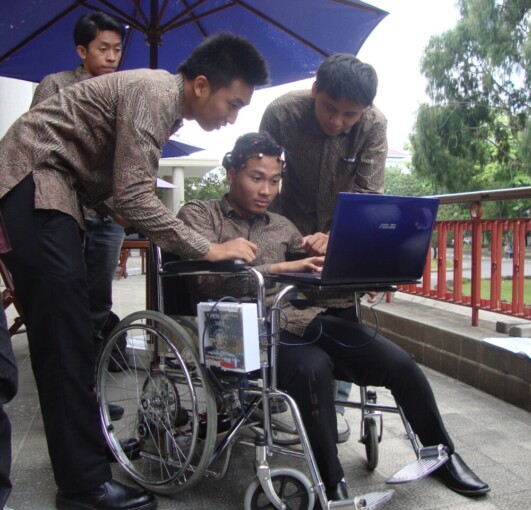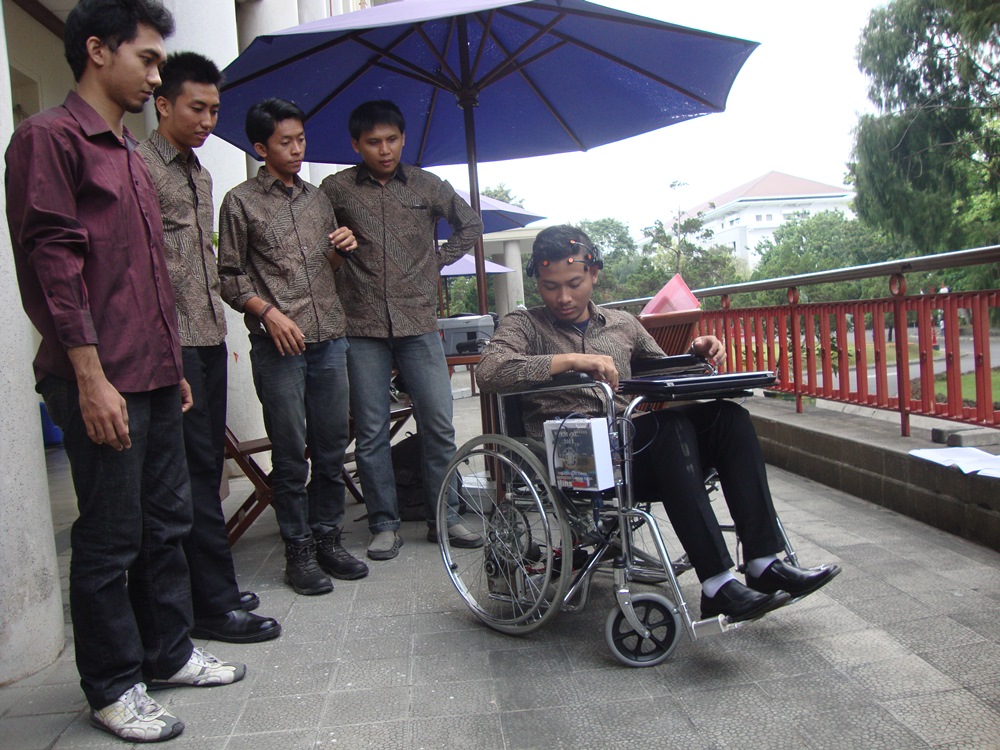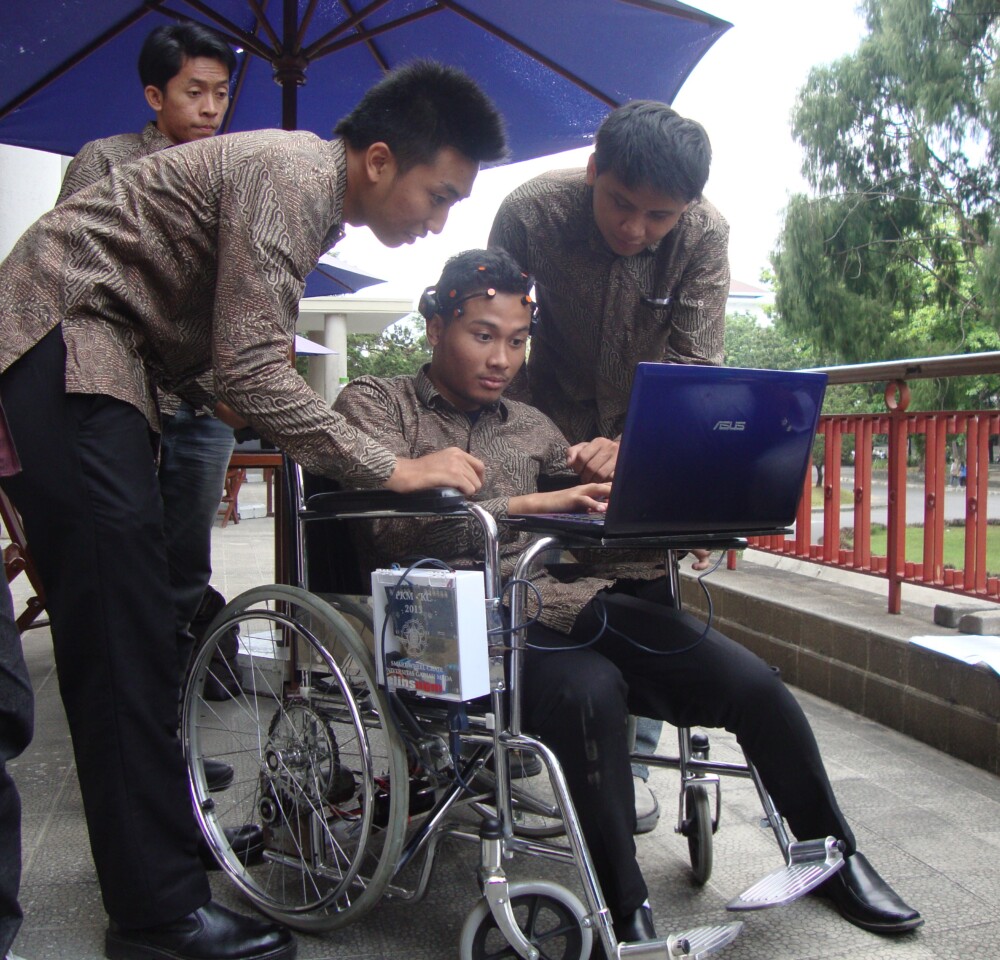Just by raising your eyebrow would move the wheelchair? No need to wonder. This is made possible due to the innovation by five students in Electronics and Instrumentation (ELINS) of Faculty of Mathematics and Natural Sciences UGM.
It was Rangga Kurniawan, Praja Sapta Ardiantara, Hafizh Adi Nugroho, M. Maftuhul Haq, and Ahmad Muzakky that have developed a wheelchair prototype, using brain wave as control system. The equipment named as Gamakuda is a wheelchair that is controlled directly by the brain of the user through facial expression parameter rather than physical motoric movement. For instance, raising the eyebrow means the wheelchair will move forward. Moving backward only takes a smile or clenching you teeth will stop the wheelchair. Then, batting the right eye would move the wheel to the right and the left eye to the left.
“So, with facial expression the wheelchair is able to move, not using physical motoric movement or other people’s help. This would reduce dependency,” said Rangga, chairman of the Gamakuda team, to journalists on Friday (20/9) in Fortakgama UGM.
Rangga said the process starts when users move their facial muscles that would generate brain wave in the beta domain. The wave will be collected by wireless using the bluetooth, then processed into google on the computer or laptop. The computer processing will give instructions for wheerchair movements.
“The system uses motor electricity at 400 Watts in power supply,” he explained.
Praja added the Gamakuda uses electrodes sensor with EEG data collecting method. The motor control uses micro-controler and a laptop to process the signal.
“Gamakuda is still a prototype, but we would develop it largely in the future to be used for the disabled people,” said Praja.
Gamakuda is made for the Student Creativity Programme and won a bronze medal in National Student Week (PIMNAS) 2013 in Universitas Mataram, 9-13 September.





